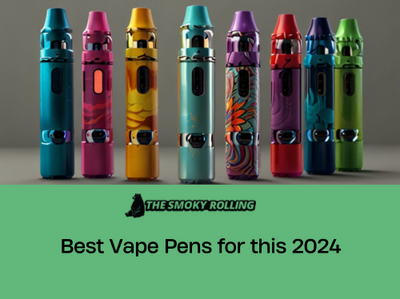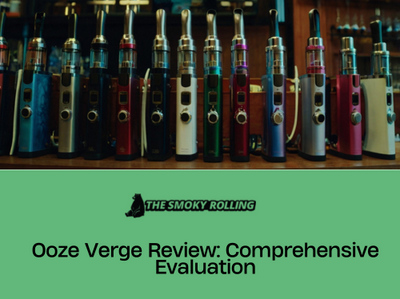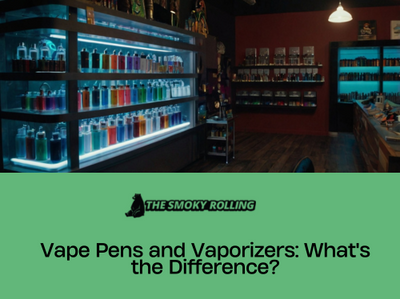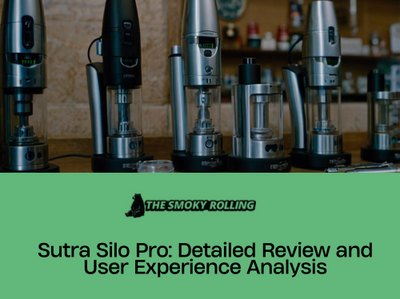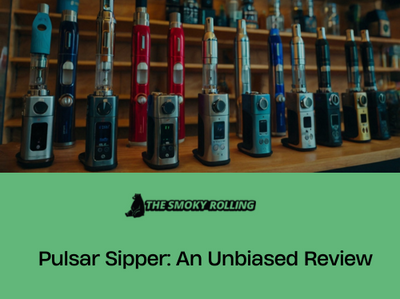Vapers are divided by the ongoing conflict between RDAs (Rebuildable Dripping Atomizers) and RTAs (Rebuildable Tank Atomizers). But do not worry! This blog reveals the inner workings of each competitor, analyzing their advantages, disadvantages, and peculiarities.
Find out the real story about cloud manufacturing, flavor intensity, and user-friendliness. By the time it's over, you'll have the ultimate vaping tool at your disposal, ready to subdue your palate and indulge in vaping ecstasy!
What is the main difference between RDA and RTA?
The primary distinction between RDA and RTA is in the way that they store e-liquid:
Rebuildable Dripping Atomizer (RDA): Needs e-liquid to be frequently (every few puffs) dripped directly onto the coils. There isn't an integrated tank with it. With its refilling e-liquid tank, the RTA (Rebuildable Tank Atomizer) allows extended smoking sessions without constant dripping.
If you are interested in the world of vaporizers, a complete blog of the differences between:Volcano Hybrid vs Volcano Classic.
RDA vs RTA pen pros and cons
|
Pros |
Cons |
|
|
RDA |
|
|
|
RTA |
|
|
check the best desktop in this blog: Best desktop vaporizer
Which one provides better flavor: RDA or RTA?
The RDAs are the best in flavor. RTAs cannot equal the powerful, savory experience of direct contact between coils and e-liquid. But there are a few restrictions attached to this delicious crown.
- RDA: More prone to leaking if not wicked properly. Improper wicking can lead to excess e-liquid saturating the deck and spilling out.
- RTA: Can also leak, but with proper wicking and filling techniques, the risk is lower due to the enclosed tank design.
Are RDA atomizers easier to build on compared to RTAs?
Rebuildable tank atomizers, RTAs, and rebuildable drip atomizers, or RDAs, compete fiercely. Vapers frequently argue over which provides a smoother building experience. However, the differences:
- RDA: Is usually considered more development-friendly. An open deck makes it easier to wrap and position because coils and wicks are seen.
- RTA: Because the tank has less room, it can be more difficult. More accuracy is needed while placing the wick and feeding it through the chimney.
Can RTAs hold more e-liquid than RDAs?
While RDAs might reign supreme in the flavor arena, one major concern for some is e-liquid capacity. Can RTAs quench that vaping thirst with larger reservoirs, or are RDAs doomed to frequent refilling?
- RDA: Because of their design, they often have lesser capacities. For prolonged vaping, they depend on regular dripping.
- RTA: Provide substantially bigger capacity, up to 8 ml or more. Longer vaping sessions without refueling are now possible.
To learn more about vaping, check this blog: Conduction vs Convection
Are RTAs more prone to leaking than RDAs?
Many people are afraid of their vapes leaking, and the discussion usually centers on whether RTAs or RDAs leak more frequently.
- RDA: More prone to leaking if not wicked properly. Improper wicking can lead to excess e-liquid saturating the deck and spilling out.
- RTA: Can also leak, but with proper wicking and filling techniques, the risk is lower due to the enclosed tank design.
Do RDAs or RTAs offer better airflow options?
Airflow choices are essential for personalizing your vaping experience. Can RTAs compete with RDAs' open decks, or do RDAs have the upper hand? As we go further into the potential airflow of each competitor, fasten your seatbelts!
- Open Skies vs. Confined Channels: We will discuss the intrinsic distinctions in airflow design between the controlled airflow channels of RTAs and the wide-open decks of RDAs.
- Champions of Customization: We'll contrast the pre-designed options on RTAs with the versatility of modifying airflow on RDAs.
- Cloud Chasers vs. MTL Masters: We'll examine how airflow configurations accommodate various vaping preferences, such as large cloud production with RDAs and tasty, tight pulls with RTAs.
- Finding Your Sweet Spot: Whether you like limited mouth-to-lung pulls or open lung hits, we'll help you determine which airflow options work best.
Check out the best dry herbs on this blog: Best dry herb vaporizers
Which type of atomizer is better for cloud chasing?
The ultimate question for the committed cloud chaser is this: Which atomizer is best for creating towering, breathtaking clouds? As is often the case with vaping, there is no easy one-size-fits-all solution. Regarding cloud chasing, both RDAs and RTAs offer advantages and disadvantages.
RDAs: Highest Vapor
- Unrestricted airflow: Their expansive decks provide a high degree of airflow control, making them ideal for building enormous clouds.
- Coil configurations: You can push the boundaries of vapor production by experimenting with different coil designs, unusual constructions, and resistances.
- Direct flavor: Since there isn't a tank, there is no flavor dilution, so that you can enjoy the pure, concentrated flavor with your clouds.
RTAs: Convenience with cloud potential
- Larger Capacity: Tanks hold more e-liquid, allowing longer cloud-chasing sessions without refilling.
- Pre-built Coils: Some RTAs offer pre-built cloud-focused coils, making it easier for beginners.
- User-Friendly: Filling and maintenance are generally more straightforward compared to RDAs.
If you want to know more about components, check these blogs:
RDA vs RTA FAQs
Do RDAs or RTAs require more maintenance?
Generally speaking, RDAs need more upkeep than RTAs.
- Dripping: To avoid residue buildup, frequent dripping requires more frequent cleaning of the coils and deck.
- Wicking: Wicking needs to be changed regularly to keep performance at its best and prevent leaks or dry hits.
- Coiling: Depending on usage and coil type, building coils may need to be cleaned and replaced regularly.
Are RTAs suitable for beginners?
RTAs offer a flexible and fulfilling vaping experience. If you're a complete newbie, though, you might want to start with pre-filled pods or beginner-friendly vape kits before trying rebuildables.
Whichever option is ideal for you will ultimately depend on how eager you are to learn, take risks, and embrace the challenges of the rebuildable path!




